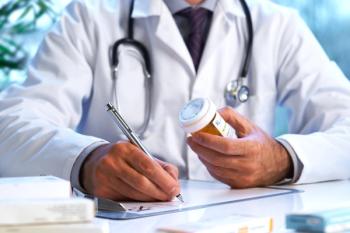
Skin response to wounding tied to challenge, not microbes
National report - Antimicrobial (poly)peptides (AMPs) are an important part of the innate immune response that protects skin from infection.
But a question remains: Are AMPs a response to the wound itself or are they a response to the presence of microbes that inevitably accompany a wound?
Ole E. Sorensen, M.D., Ph.D., and colleague set out to answer that question under sterile conditions, first in human skin cultures and then in mice. The work was conducted at Lund University in Sweden and the David Geffen School of Medicine at the University of California, Los Angeles, and was published online on June 15 in the Journal of Clinical Investigation.
They also found induction of two other antimicrobial proteins, neutrophils gelatinase-associated lipocalin (NGAL, or siderocalin) and secretory leukocytes protease inhibitor (SLPI).
These findings were replicated in the mouse model under sterile conditions. Dr. Sorensen tells Dermatology Times that researchers found lower levels of these proteins expressed in the animal model than in culture, but that is not surprising given that the perimeter of the tissue sample itself constitutes a wound site.
The immune response
Researchers previously had demonstrated that activation of the epidermal growth factor receptor (EGFR) results in a signaling cascade that induces hBD-3, NGAL and SLPI. Now they have gone on to show that during wound healing, EGFR are activated by released growth factors. A simple breach in keratinocytes cell cultures was sufficient to set off the process.
Dr. Sorensen says this demonstrates that "The act of wounding itself triggers the innate immune response to eliminate microbes. It's a pre-emptive response that does not require the presence of microbes but rather anticipates them."
The fact that these AMPs levels significantly increase only three to four days after wounding, about the time that the influx of neutrophils declines, suggests a two-stage process for combating infection. It may be that neutrophils stimulate the expression of AMPs or that keratinocytes do not express AMPs until they have partially restored the epithelium and have begun to differentiate. Those details are areas for further study.
Dr. Sorensen believes that a better understanding of this choreography of the immune response may suggest ways to harness or augment it to prevent infection from becoming established in the first place.
He says, "If you stimulate the epidermal growth factor receptors, it takes about two days to generate the AMPs response instead of four days. One can accelerate the process a bit."
He suggests that the prophylactic topical use of epidermal growth factors a day or two prior to surgery might rev up AMPs production and provide better innate protection against infection, though that remains to be demonstrated.
Dr. Sorensen is particularly concerned about the growing problem of organisms' resistance to available antibiotics.
"We need to find strategies where we stimulate the body's own production of these natural peptides," he says.
He notes that hBD-3 is very active against methicillin-resistant Staphyloccocus aureus (MRSA) and might be a promising area for clinical research.
Newsletter
Like what you’re reading? Subscribe to Dermatology Times for weekly updates on therapies, innovations, and real-world practice tips.


















